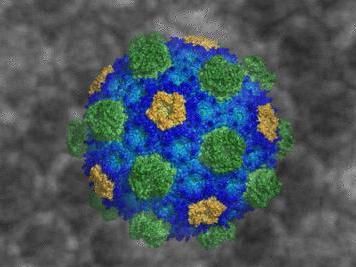NIH funding helps PNNL researchers study bacteria that commonly attack cystic fibrosis patients, and tumor development
Advertisement
Two National Institutes of Health grants, totaling nearly $3 million, aim to alleviate painful conditions that affect millions of Americans. For cystic fibrosis patients, the research will be used to fight against infections caused by an aggressive bacterium called Pseudomonas aeruginosa that can wreak havoc in respiratory systems. For millions of tumor sufferers, the work will lead to understanding what goes wrong in the growth and development of cells.
Through the first grant, researchers at the Department of Energy's Pacific Northwest National Laboratory will develop a model of the cell wall of the bacterium P. aeruginosa in hopes of discovering how the membranes and proteins excrete antibiotics.
P. aeruginosa takes advantage of a genetic defect in cystic fibrosis patients that changes the function of proteins in the membrane of cells in the lungs, allowing the formation of a biofilm that interferes with normal lung function.
Bacteria are living cells and some such as P. aeruginosa have an inner and outer membrane, each containing proteins. PNNL researchers will create a computer model of the cell wall, its embedded proteins and their functions. The outer membrane will be under particular scrutiny because it interacts directly with the cell's environment and controls the transport of nutrients and other molecules, such as antibiotics, into the cell. The PNNL research team will study the transport of small molecules through proteins in the outer membrane in order to provide an understanding of the underlying mechanisms. Researchers will also examine which factors are important in the resistance of P. aeruginosa for antibiotics designed to disrupt the outer membrane, giving insight into why P. aeruginosa is elusive to treatment. The structures of the outer membrane proteins of P. aeruginosa will be modeled after similar proteins taken from Escherichia coli, for which experimental crystal structures are available.
The second NIH grant will fund research of the epidermal growth factor receptor, or EGFR, family, which is involved in cellular growth and differentiation. This research is expected to aid in understanding what causes tumors to form. The EGFR family of receptors has four members, and how the members of the receptor family affect each other's signaling properties is not well known. PNNL researchers will generate a computer model for the EGFR family that combines their trafficking and signal transduction properties in an effort to learn about what might be causing abnormal cell growth. As part of the project, wet lab experiments will be performed at PNNL to validate or invalidate the model predictions.

























































